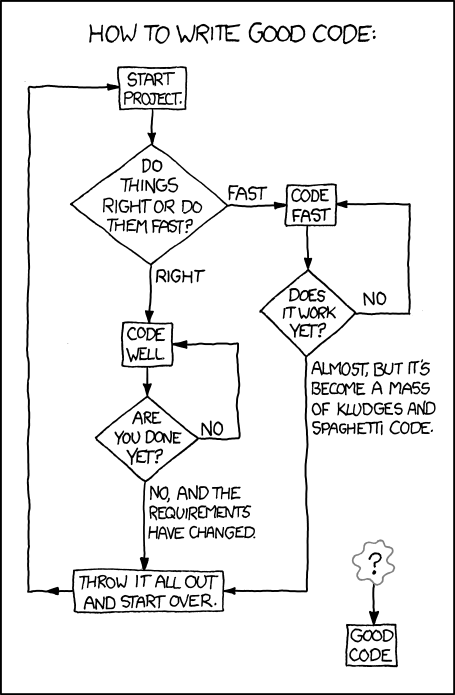Without discussing the facts in too much detail, the case of Star Athletica LLC v Varsity Brands Inc. dealt with two companies that design and manufacture cheerleading outfits, which often incorporate fanciful designs and patterns to distinguish the cheerleaders from each other (and to bring in their respective schools' colors). Varsity had registered over 200 such designs, many incorporating "...combinations, positionings, and arrangements of elements that include chevrons, lines, curves, stripes, angles, diagonals, inverted [chevrons], coloring, and shapes". The designs at issue are registrations 299A, 299B, 074, 078, and 0815 (viewable at the Appendix to the judgment). Varsity took Star Athletica to court over copyright infringement, specifically relating to the designs above, with the matter ultimately ending in the Supreme Court.
The crux of the matter lies in whether the designs used by Varsity are protected by copyright under 17 USC 102(5) as pictorial, graphic of sculptural works, and whether they would be classed as a 'useful article' under the provision, meaning an article "…having an intrinsic utilitarian function that is not merely to portray the appearance of the article or to convey information", therefore not being protected by copyright. Useful articles would only be protected by copyright if they incorporate "...pictorial, graphic, or sculptural features that can be identified separately from, and are capable of existing independently of, the utilitarian aspects of the article". This would mean that the design used, and wished to be protected, needs to stand out on its own from the article its used on, otherwise it will be deemed as merely functional and won't be protected.
Justice Thomas, handing down the majority's opinion, then moved onto whether the designs actually can be identified separately from, and can exist independently, from the utilitarian aspects of the uniforms.
The Court set out the ordinary interpretation of the statute's text, in that for the design to be identified separately from the useful article, the decision-maker only needs to "...be able to look at the useful article and spot some two- or three-dimensional element that appears to have pictorial, graphic, or sculptural qualities". This is pretty much as simple as it gets, as the identification of a design in the article, so long as it doesn't blend into the article or isn't a part of its functionality, is most likely quite straightforward in many instances. The second part, the independent-existence of the design, is a determination of "...that the separately identified feature has the capacity to exist apart from the utilitarian aspects of the article". The design therefore has to retain its design value, i.e. remain a work capable of being protected under section 102(5); however, it still cannot be a useful article in itself even if separated from the original article it was applied to, nor will it give rise to rights in the useful article it was applied to even if it is protectable outside of that article.
In summary, "...a feature of the design of a useful article is eligible for copyright if, when identified and imagined apart from the useful article, it would qualify as a pictorial, graphic, or sculptural work either on its own or when fixed in some other tangible medium". What remains curious is the subjectivity involved in the test, where the decision-maker has to only identify the design and imagine is outside of the useful article for it to potentially be protected.
 |
| Some don't need fancy patterns to distinguish themselves in cheerleading |
Star Athletica put forth a wealth of arguments to contradict the above determination. Among them Justice Thomas rejected the assertion that, for protection to be afforded for the design, both the design and the useful article have to exist as such when separated (i.e. as a protectable design and a useful article in themselves), where the extracted design would solely be an artistic feature, as the focus is on the design rather than the article it was taken from and the end-result after separation for it is irrelevant. Applied art would be protected if separated, even if it fulfilled some useful aspect in the article.
The Supreme Court therefore held that the designs in the cheerleader outfits are protected by copyright, and rejected the appeal.
While the majority issued its, arguably at least, straightforward decision, there was some dissent from Justice Breyer and Justice Kennedy. The Justices, in their joint dissent, argued that the design and the dress (as depicted in the registrations) were not separable, and would merely reproduce the dress in the new 'separated' design. Due to this lack of both physical and conceptual separation, the design would not be protected under copyright. The dissent's viewpoint clearly stems from the depiction of the designs, but this writer would argue that their perspective would entail a great deal of splitting hairs. While it is clear one has to treat the design as it is presented in the registration, it is still possible to apply common sense when looking at the design from a subjective point of view, which affords this ability to both identify and imagine the design separate from the outline of a dress (or the three-dimensional depiction of the same).
The case if a very interesting one, and has finally set a clear test for the consideration of useful articles and designs in the same. While the subjectivity of the test can, and most likely will, ruffle some feathers, it seems to be the simplest and most logical approach to assessing the designs, but does leave the outcomes of cases in the hands of the respective judges and their subjective viewpoints. In its simplicity lies some level of concern, as it will undoubtedly impact the "knock-off" business, but rightsholders would argue this is the right, and desired outcome.

